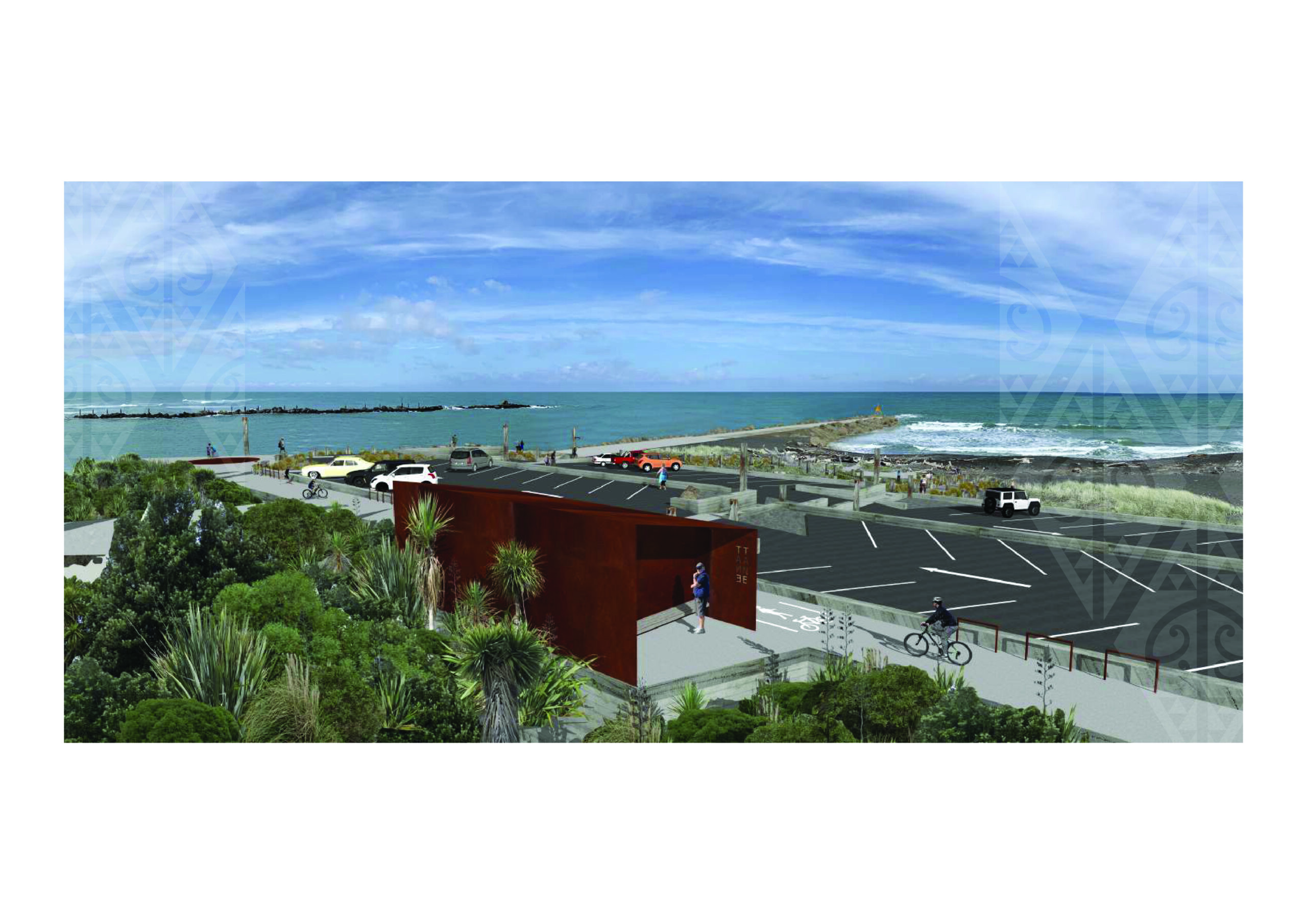Injection of tourism funding for North Mole aspirations


The area surrounding Whanganui’s North Mole is one step closer to completion, with the Ministry of Business Innovation & Employment’s (MBIE) Tourism Infrastructure Fund last week announcing $876,250 towards the delivery of aspirations and improvements surrounding the Mole itself.
Over the past two years, a critical characteristic of Te Pūwaha has been operating under the Te Awa Tupua status. This world first status granted to the Whanganui River in 2017, has ensured that a true community led approach is possible. This has seen vast improvement in terms of community, including hapū and iwi involvement.
Under the leadership of Te Mata Pūau, hapū have been working closely with the Castlecliff community to advance the work Horizons Regional Council, and previously Progress Castlecliff has undertaken to gather aspirations for the area surrounding the North Mole, developing a concept design in conjunction with community groups, hapū, councils and interested stakeholders.
Although many of these aspirations sit out of Te Puwaha’s budget and scope, Te Mata Pūau introduced an abundant mindset, and formed a working party with the community humbly named Ngā Ringaringa Waewae. Ngā Ringaringa Waewae is a term used by Whanganui iwi to celebrate the many hands and legs that contribute to kaupapa in multiple ways that lead to success. This work has been supported by Whanganui District Council, who have already allocated just over $1 million in funding in their 2021-31 Long Term Plan, and secured another $300,000 of external funding for the project.
Progress Castlecliff and Ngā Ringaringa Waewae representative Jamie Waugh has been instrumental in leading the push for central government funding.
“The North Mole is one of the most popular recreational areas in Whanganui, and the repair and reinstatement of the mole, along with the upstream fishing platforms has only seen that usage increase, there are many days when the current carpark is absolutely packed.”
“At the moment the Mole itself is looking great but our community aspires for more, it is time we give the surrounding area the respect and care it deserves,” he says.
“This contribution from central government couldn’t come at a better time as it provides a glimpse into the transformational power of the hapū and community led way of working under Te Awa Tupua and Tupua te Kawa and will assist delivery of a vision our community has been working on for at least a decade.”
Whanganui District Council Chief Executive David Langford agrees last week’s funding announcement is due to community leadership.
“Earlier this year, Council decided to hand over control of the project to the community via Progress Castlecliff and Nga Ringaringa Waewae,” he says.
“This was done because Council wanted to build on the learning and success to date of Te Pūwaha by getting out of the way and enabling the community to take the lead. This additional funding Jamie and the team have secured is a testament to this different way of working.”
With contributions from Horizons Regional Council and Whanganui District Council currently being finalised through their respective Long Term Plan processes, it is anticipated North Mole aspirations will be delivered sometime in 2024. These include ecological and environmental rehabilitation work, a fit for purpose carpark and toilet, and shared pathways to encourage connection with Te Awa Tupua and the wider taiao (environment).
Te Pūwaha project director Hayden Turoa sees this funding announcement as a significant milestone in the Te Pūwaha project.
“It is important to acknowledge central government, along with those who have contributed to the North Mole project along the way, as together we will be able to bring to fruition the aspirations of our ancestors, for tangata whenua and the wider community,” he says.
“Those involved range from community members attending focus groups, through to those who have collated aspirations and created the vision we have today, to others who have provided expert advice, whether for example, it be to source funding, or to explain the benefits of plant species.”


